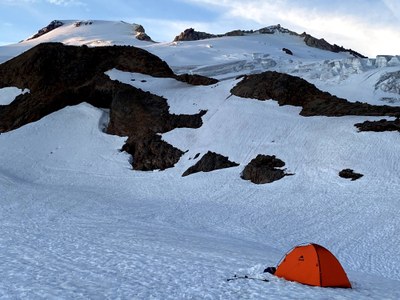
Trip Report
Basic Glacier Climb - Mount Baker/Easton Glacier
Warm weather trip with a fantastic group. Gale force gusts turned us around at the top of the Roman Wall.
- Thu, Jun 24, 2021 — Fri, Jun 25, 2021
- Basic Glacier Climb - Mount Baker/Easton Glacier
- Mount Baker/Easton Glacier
- Climbing
- Turned Around
-

- Road suitable for all vehicles
-
We were able to drive almost all the way to the parking lot. On the Park Butte Trail, the first .75 miles and the switchbacks between 3900 and 4250 were snow-free, as was the Railroad Grade. Everything else was snow-covered, making the approach and hike out more of a snow scramble than easy trail walk. With warm weather, the creek crossing at 3700 feet is starting to be a bit tricky.
We left the parking lot at 11:00, and we took our time, given the hot temperatures. We brought poles and water shoes to keep our boots dry, and we stashed our water shoes and had lunch after crossing the eastern braid of the creek.
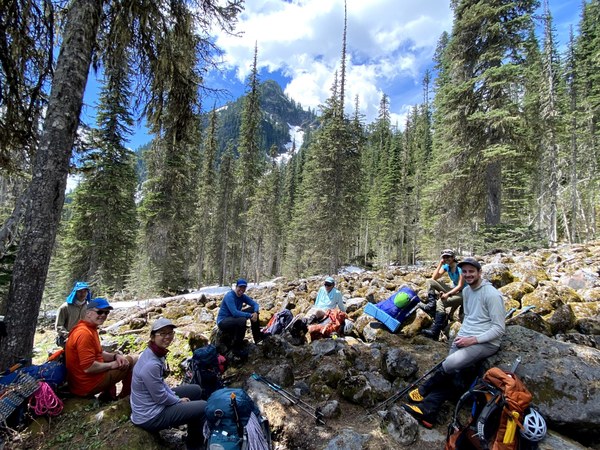
On the trail proper (difficult to follow due to snow), the two footers for the bridge are placed across the eastern braid of the creek as planks.
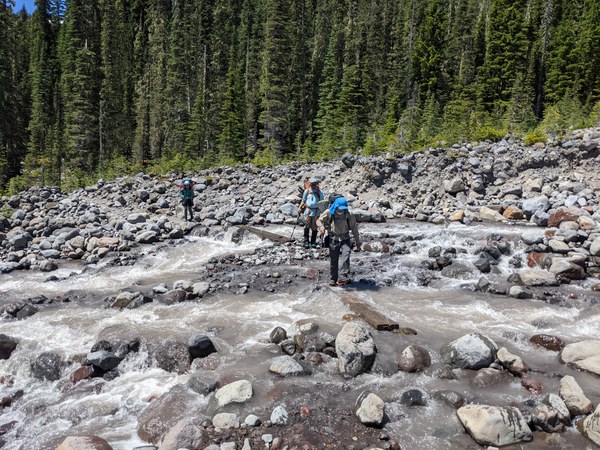
Photo by Magda B of the group crossing on the way down.
The aluminum bridge has not yet been installed.
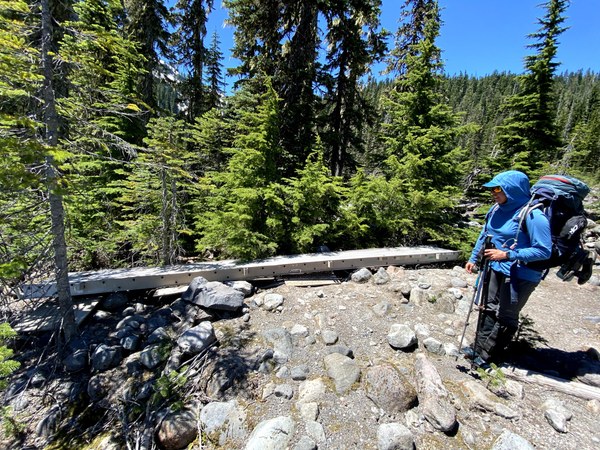
Hopefully, the bridge will be installed by next weekend.
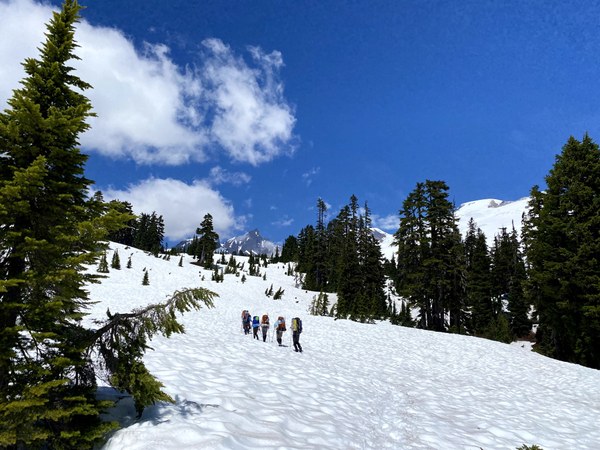
Snow was mostly continuous until we got to the Railroad Grade.
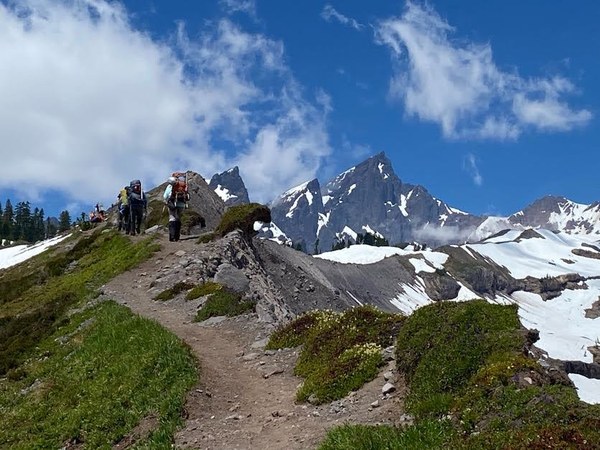
Our concerns for this trip were the river crossing on the Park Butte Trail, the heat, and the predicted wind gusts of over 30 mph early on Friday. We had a lot of good information from trips the weekend prior, with many thanks to Catharine Killien, Krishna Dase (KD), and Chris Caviezel, including the coordinates (48.7466, -121.8400) to a flat campsite with running water at 6500 feet. It also came with a Gray-Crowned Rosy-finch, a high elevation bird that is elusive on many birders life lists.
We had a lovely dinner and beautiful camp kitchen thanks to the talented Gene K.
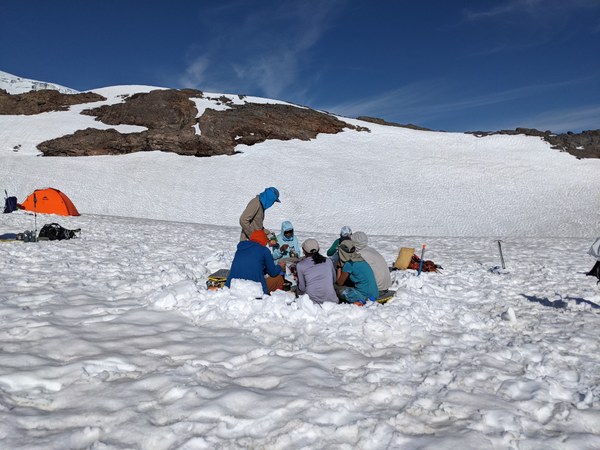 Photo by Magda B.
Photo by Magda B.
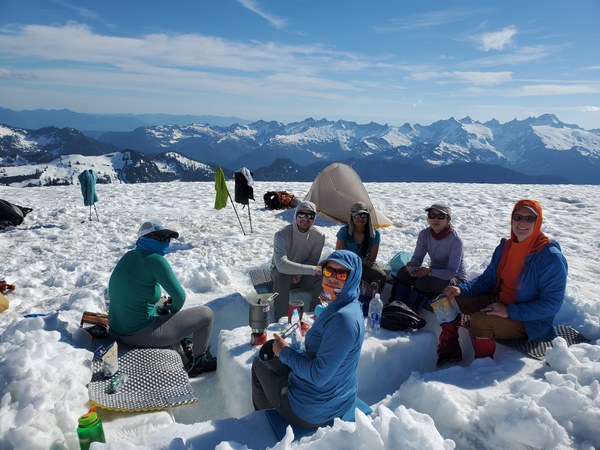
Photo by John B.
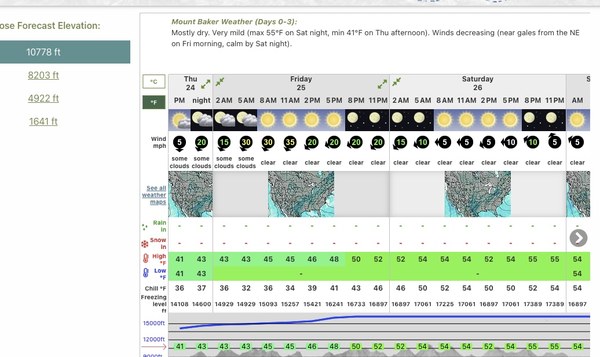
We had cell service with Verizon at camp, so I had my husband text us the updated weather forecasts. The prediction was for the winds to be higher and arrive earlier--not what we wanted to see. We started out at 1:30 am, and the winds had started blowing already. The temperatures were so warm that between when I got up at midnight, and we left at 1:30, I was wearing a base layer and no gloves. The freezing levels all week had been well above the summit level, so we expected soft snow and were concerned about snow bridges enroute. Since the winds were blowing from the NE, we hoped we'd be protected until we got closer to the summit, but as soon as we left camp and crossed the western side of the glacial moraine, we could smell the sulfur blowing straight towards us from the summit crater.
We kept a steady pace. Right out of camp, we were passed by a guided group of 11 on 2 ropes. They moved much faster than us, but took long breaks, so we kept catching up to them. We stopped every hour to eat, drink, pee, and adjust layers. Many of us felt a little confused at just how few layers we were wearing on a glacier in the middle of the night! I wore my thin undergloves the entire day without needing to add overgloves once, even when we stopped.
Travel uphill went smoothly on soft snow, with a well-defined boot track and only one crevasse that needed a small jump to cross. The winds continued to build, and by the time we intersected with the Squak Glacier approach at about 9300 feet, it was throwing us off balance. If it had been icy, it would have been unnerving, but the snow remained incredibly soft.
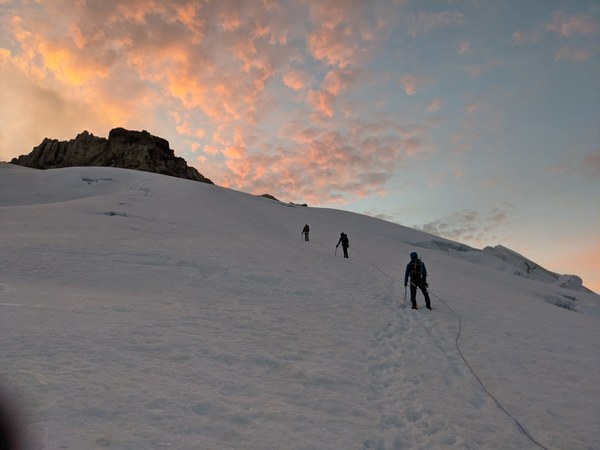
In this photo of us approaching the summit crater, taken by Magda, you can see the wind gusts catching our ropes. We had a beautiful sunrise. I can't imagine a much more beautiful place to be with the Roman Wall and Colfax Peak in front of us and the Black Buttes to our left.
There was a great boot pack on the Roman Wall, with really nice switchbacking. However, the wind was really gusting, forcing us to pause in rest position holding 3 points of contact, until the gust passed, and we could make a little further progress until the next one arrived. Occasionally, the gusts would knock us to our knees. Any other time, that would have been very concerning, but with the snow being so soft, we would just sink into the snow in the boot path without even needed to self-belay.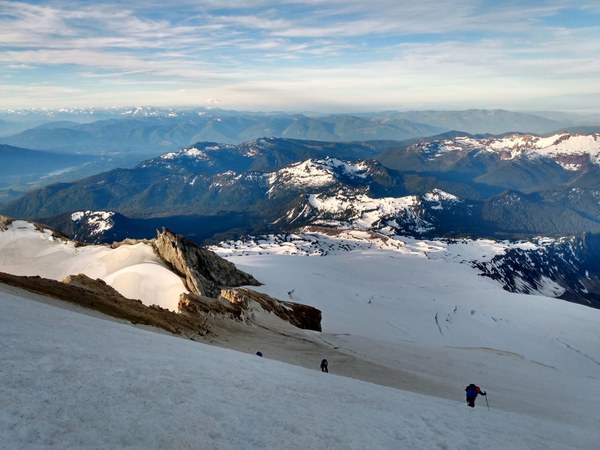
As we had a short rest, Jin K. captured this photo of the second rope team bent over from the wind as they ascended the Roman Wall.
It took us 90 minutes to make it up the Roman Wall at this pace. The winds were even stronger at the top of the Roman Wall, making it difficult to move forward. Knowing the winds were going to pick up even more in the next hour and concerned about an even windier descent of the Wall, we made the difficult decision to turn around shy of the summit. Fortunately, the soft snow made for easy descending, especially once we were off the Roman Wall and a little bit protected from the wind.
Based on the National Weather Service's graphic of the Beuafort Scale, it looks like we reached gusts at Number 9, Gale (39-46 mph).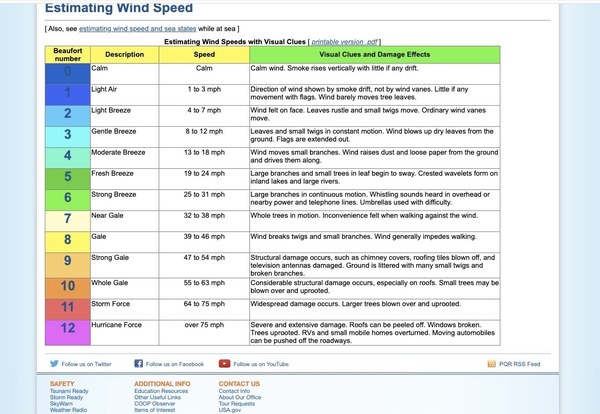
We had an incredible team with fantastic expedition behavior who challenged themselves in some difficult conditions with great self care, as well as looking out for their team members. We made new friends, saw a fantastic sunrise, and came home safe, happy, and tired. Many thanks to John B. for mentoring me, Magda B. for all her great work as the third member of our leadership group, and for the wonderful climbers who joined us.
 Danielle Graham
Danielle Graham